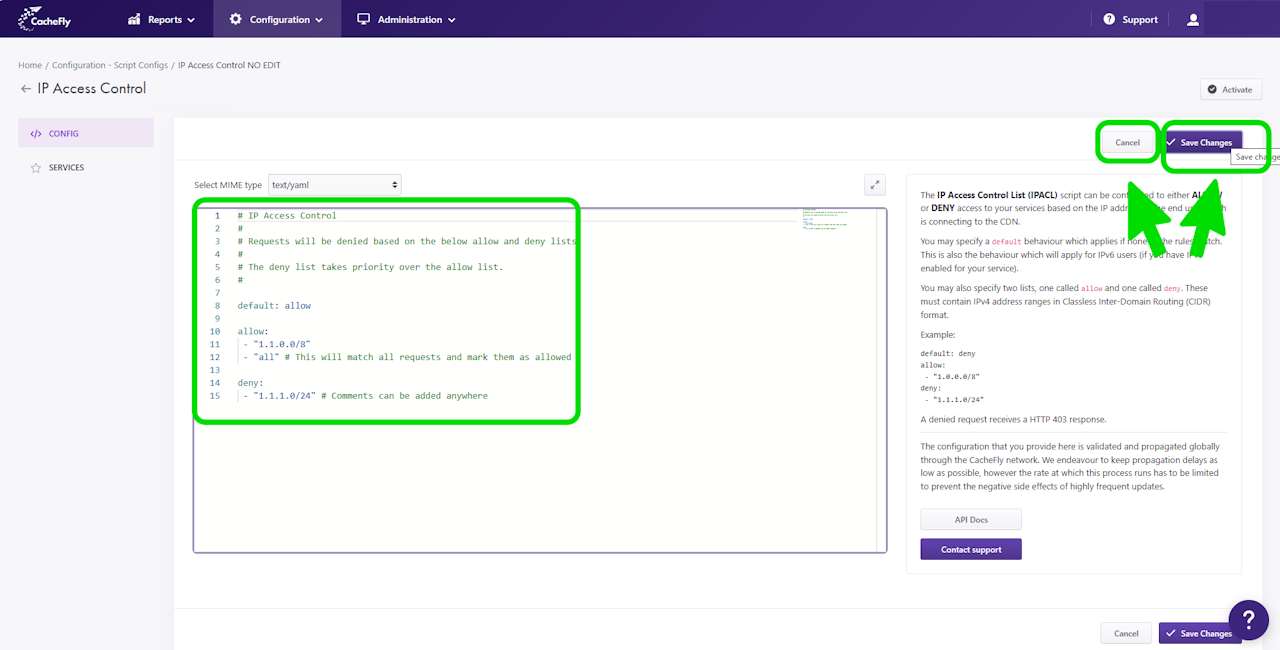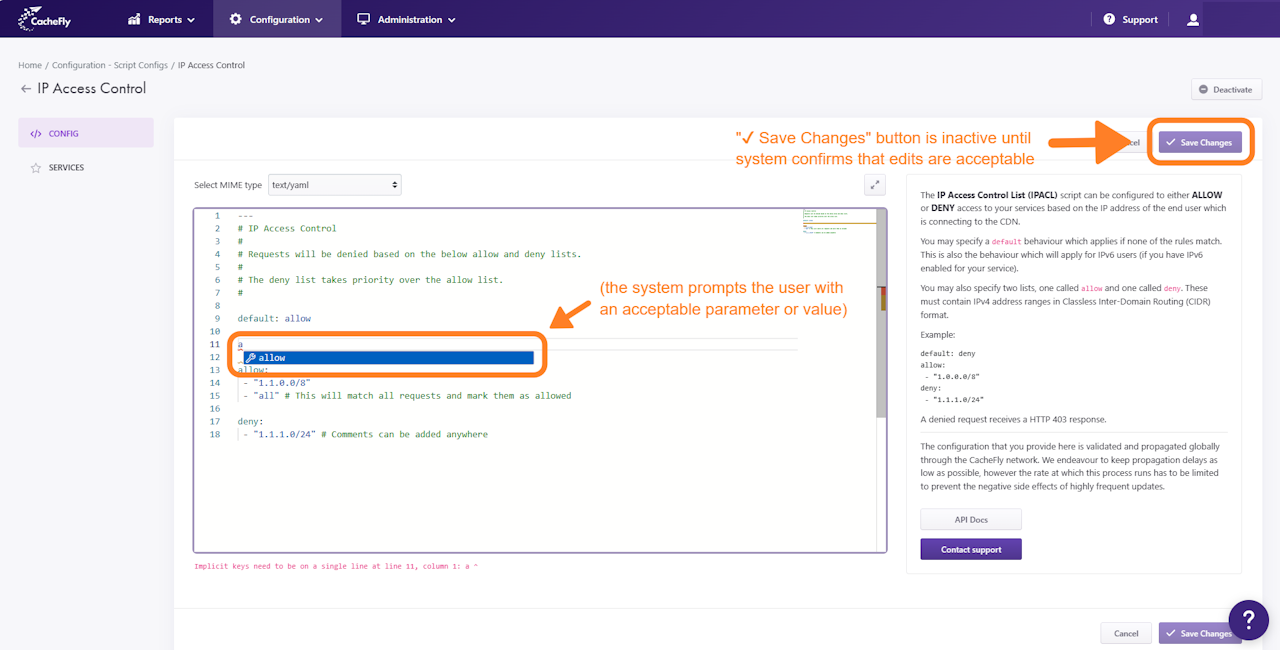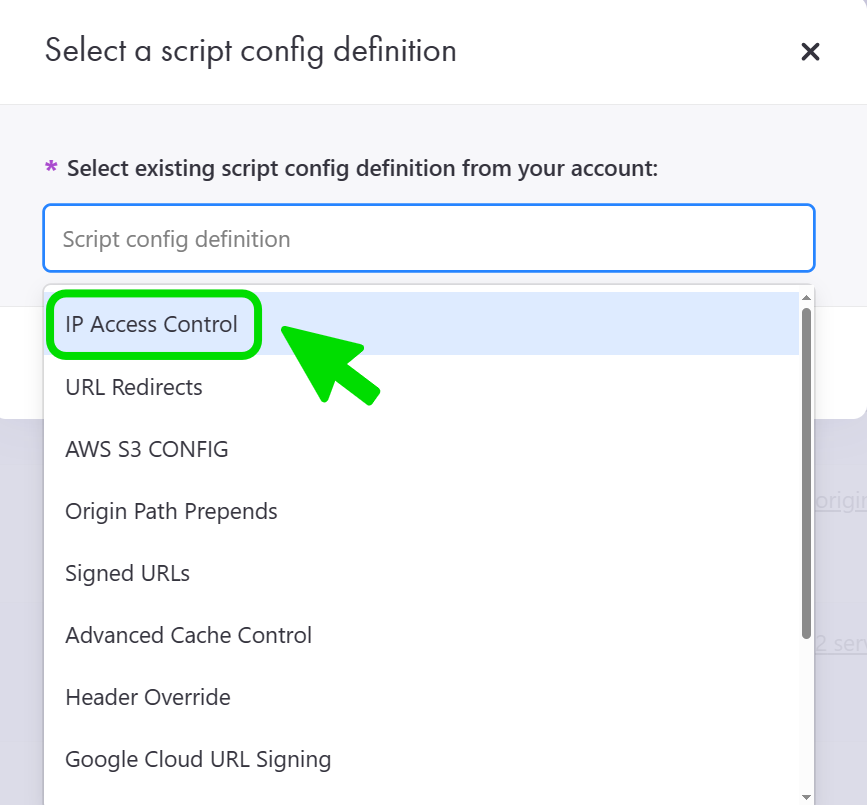

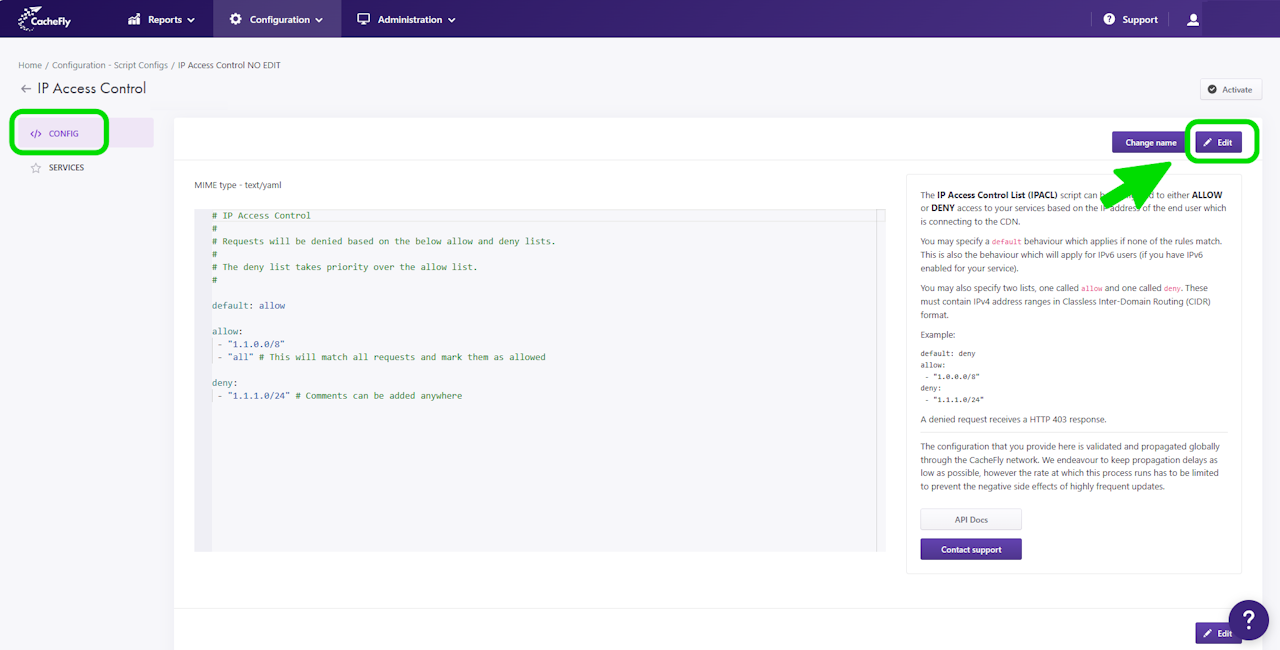
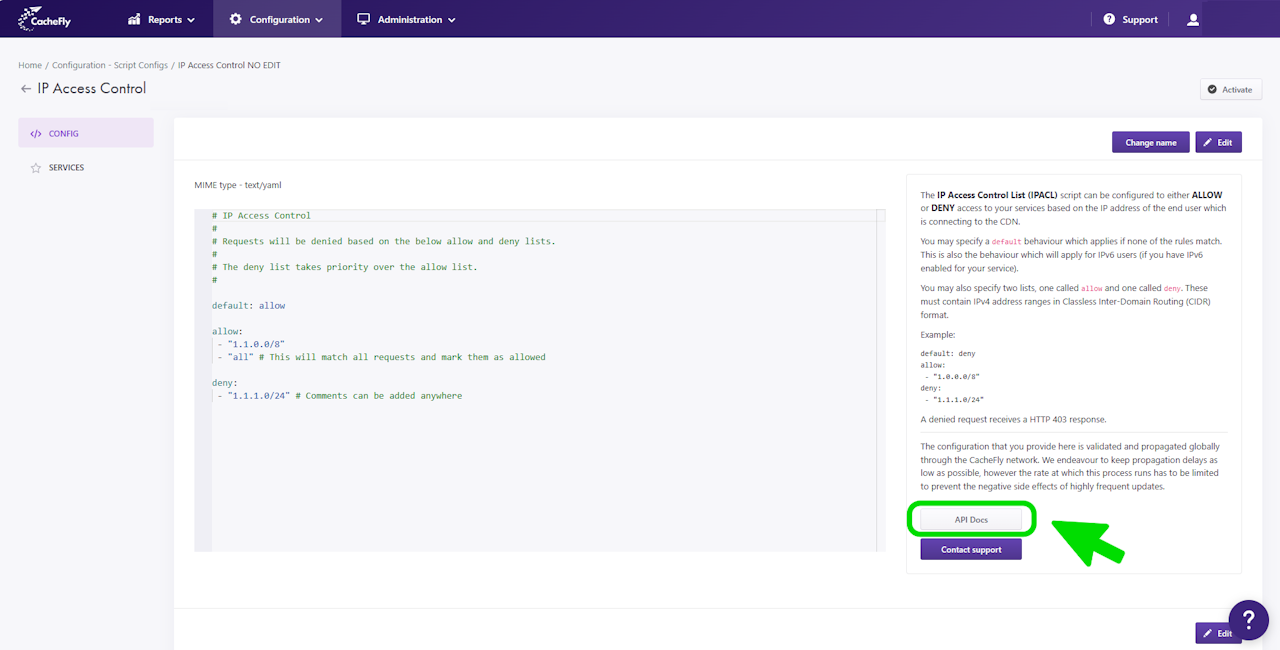

IP Access Control List (IPACL)
The IP Access Control List (IPACL) script can be configured to either ALLOW or DENY access to your services, based on the IP address of the end user which is connecting to the CacheFly content distribution network (CDN.)
To add an IP Access Control List (IPACL) script config to the list of script configs created for your CacheFly services in general, or to associate an IP Access Control List (IPACL) script config with a specific CacheFly service, see Adding and Using Script Configs.

Using the IPACL Script Config
In the IPACL script, you may specify a default behavior which applies if none of the rules match. This is also the behavior which will apply for IPv6 users (if you have IPv6 enabled for your service).
You may also specify two lists, one called allow and one called deny. These must contain IPv4 address ranges in Classless Inter-Domain Routing (CIDR) format.
Example:
default: deny
allow:
- "1.0.0.0/8"
deny:
- "1.1.1.0/24"
A denied request receives a HTTP 403 response.

Editing the IPACL Script Config
When you add the IP Access Control List script config to your list of script configs in CacheFly, it will initially display a default configuration as a model for you to adapt to your own requirements.
To edit this default configuration:
Click the blue Edit button to enter edit mode
Modify the script config as you require
Remember to click the blue ✔ Save Changes button to save your changes.
As you edit:
The CacheFly system shows on-screen prompts to help you select acceptable parameters and values.
The blue ✔ Save Changes button will be partially grayed out and will be inactive, until the system confirms that your edits are acceptable.
You can cancel your current edits by clicking the gray Cancel button.
Scroll the graphics in this step horizontally to see all the screens.

Additional Help Topics
As an alternative to creating and managing script configs via the CacheFly user interface as described in this guide, you can also create and manage script configs via API calls.
Click the gray API docs button to access the Script Configs section in CacheFly's online API documentation for further information.

